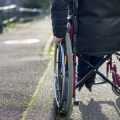Introduction: The Importance of Physical Activity in British Youth
Physical activity is a cornerstone of health and wellbeing, particularly for children and adolescents navigating the formative years within the British education system. With rising concerns over sedentary lifestyles, obesity, and mental health issues among young people across the UK, schools have become critical environments for fostering positive health behaviours. The Department for Education and Public Health England highlight that regular exercise not only supports physical development but also enhances cognitive function, emotional resilience, and social skills. In British schools, the unique combination of academic pressures, limited playground space—especially in urban areas—and varying access to extracurricular sports presents both challenges and opportunities for implementing effective exercise prescriptions. Understanding the context of British school environments is therefore essential to tailor interventions that are culturally relevant, sustainable, and impactful in promoting lifelong healthy habits among youth.
2. Understanding the British School Environment
To effectively prescribe exercise for children and adolescents in the UK, it is vital to first appreciate the distinctive characteristics of British school environments. These features, ranging from daily timetables to physical infrastructure and extracurricular options, significantly shape pupils’ opportunities for physical activity.
School Schedules and Timetables
British schools typically operate on a structured schedule, with lessons beginning around 8:30 or 9:00 am and concluding by 3:00 or 3:30 pm. The day is divided into periods punctuated by short breaks and a longer lunch interval. The following table illustrates a standard primary and secondary school day:
| Time | Primary School | Secondary School |
|---|---|---|
| 08:45 – 09:00 | Registration/Assembly | Tutor Time/Assembly |
| 09:00 – 10:30 | Lessons | Lesson 1 & 2 |
| 10:30 – 10:45 | Break | Break |
| 10:45 – 12:00 | Lessons | Lesson 3 |
| 12:00 – 13:00 | Lunch Break (includes playtime) | Lunch Break (optional clubs/sports) |
| 13:00 – 15:15 | Lessons/Afternoon Activities | Lesson 4 & Tutor Time/Enrichment Activities |
This structure provides designated intervals for movement but also highlights potential constraints, especially during winter months when outdoor time may be limited by weather or daylight hours.
Playgrounds and Outdoor Spaces
The majority of British schools benefit from dedicated playgrounds and sports fields. Primary schools usually feature tarmac playgrounds equipped with markings for games like hopscotch or football, while secondary schools often have access to grass pitches, all-weather courts, and sometimes athletics tracks. However, the quality and size of these facilities can vary significantly based on location—urban schools may have more limited space compared to rural counterparts.
Diversity of Facilities Across Schools:
| Facility Type | Primary Schools (%) | Secondary Schools (%) | Description/Notes |
|---|---|---|---|
| Tarmac Playground | 95% | 80% | Main space for breaktime activities; often multi-purpose. |
| Sheltered Play Area | 60% | 40% | Covers for wet weather, more common in newer buildings. |
| Synthetic Pitches/MUGAs* | 25% | 70% | *Multi-Use Games Areas – support diverse sports year-round. |
| Sensory/Quiet Gardens | 15% | <5% | Cater for pupils needing quieter spaces or additional needs. |
| Sizable Grass Fields | 55% | 90% | Main site for PE and after-school sports; less common in city centres. |
Extracurricular Offerings and Clubs
A hallmark of British education is the breadth of extracurricular activities available to students outside formal lessons. Common options include football, rugby, netball, cricket, dance, athletics, and swimming. Participation rates can be influenced by factors such as staff expertise, funding levels, and community partnerships. Additionally, national initiatives like “The Daily Mile” encourage regular movement within the school day itself.
The Impact of Environmental Features on Physical Activity Opportunities
The interplay between schedules, facilities, and extracurricular provision determines how much—and what type of—exercise children can realistically access at school. While most schools offer at least two hours of timetabled PE weekly (in line with national guidance), actual opportunities for spontaneous play or structured sport can vary markedly. Recognising these environmental factors enables educators and health professionals to tailor exercise prescriptions that are both feasible and culturally relevant within the UK context.

3. Guidelines and Recommendations for Exercise Prescription
Current UK standards for physical activity in children and adolescents are informed by leading organisations such as the NHS and Public Health England. These guidelines serve as the foundation for exercise prescription within British school environments, ensuring that interventions are both evidence-based and culturally relevant.
National Recommendations
The NHS and Public Health England recommend that children and young people aged 5 to 18 years should engage in at least 60 minutes of moderate-to-vigorous physical activity each day. This activity can be accumulated across the day and should include a variety of types to promote overall health and development.
Types of Physical Activity
The prescribed activities encompass aerobic exercises—such as brisk walking, cycling, running, swimming, and team sports like football or netball—which are vital for cardiovascular health. Additionally, muscle- and bone-strengthening activities are recommended at least three times per week. Examples suited to British schools include playground games, climbing frames, gymnastics, dance, and resistance exercises using body weight or age-appropriate equipment.
Frequency and Intensity
Daily physical activity is emphasised rather than sporadic participation. The majority of the 60 minutes should be moderate-to-vigorous intensity—meaning the child’s heart rate increases, they breathe faster, but can still talk. Vigorous-intensity activities will make talking more difficult due to higher exertion levels. It is important that both forms are incorporated throughout the school week via PE lessons, active playtimes, after-school clubs, and active commuting where possible (e.g., walking or cycling to school).
Adaptations Within School Settings
Schools are encouraged to provide varied opportunities that cater to all abilities and interests, including inclusive practices for children with disabilities. Structured PE sessions should align with curricular goals while unstructured playtime offers autonomy and social engagement. British schools are also urged to foster a supportive environment through staff training, accessible facilities, and partnerships with local sports clubs.
By adhering to these national recommendations, schools not only support pupils’ immediate physical health but also lay foundations for lifelong healthy habits—an objective at the heart of public health policy across the UK.
4. Tailoring Exercise Interventions for British Pupils
Adapting exercise programmes within the context of British schools requires careful consideration of pupils’ diverse needs and backgrounds. The aim is to ensure that physical activity is both effective and inclusive, supporting every child’s development regardless of age, ability, or cultural heritage. Below, we explore key strategies to tailor interventions for maximum impact in the UK educational setting.
Adapting to Age and Developmental Stages
Physical and psychological development varies widely between primary and secondary pupils. Younger children benefit from play-based activities that develop fundamental motor skills, while adolescents may engage more with structured fitness routines or team sports. Customising interventions by age ensures relevance and safety.
| Age Group | Recommended Activities | Considerations |
|---|---|---|
| Primary (5-11) | Games, dance, basic athletics | Emphasise enjoyment, variety, and skill-building |
| Secondary (12-18) | Sports clubs, fitness circuits, outdoor challenges | Promote autonomy, peer interaction, and progression |
Addressing Varying Abilities
Pupils’ physical abilities can differ due to developmental, health-related or neurodiverse factors. Programmes should incorporate differentiated tasks—offering a range of challenge levels within the same session. For example, during PE lessons, stations can be set up with modified equipment or alternative rules to ensure accessibility.
Examples of Differentiation Techniques:
- Use lighter balls or shorter distances for those with reduced mobility
- Provide visual aids or structured routines for neurodiverse pupils
- Offer ‘challenge by choice’ options within group activities
Cultural Inclusivity in Physical Activity
The multicultural fabric of British schools necessitates culturally responsive programming. Integrating activities from various traditions—such as Bollywood dance workshops or football variations popular among different communities—fosters a sense of belonging and respect.
| Cultural Background | Inclusive Approaches |
|---|---|
| Diverse ethnicities | Introduce traditional games from pupils’ home countries; celebrate cultural festivals through sport |
| Religious considerations | Respect modesty requirements; offer single-gender sessions when appropriate |
Navigating School Resources and Facilities
The availability of resources varies greatly across British schools. While some have expansive playing fields and sports halls, others may be limited to small playgrounds or indoor spaces. Creative use of available facilities—such as utilising local parks or community centres—can expand opportunities for exercise.
Resource Adaptation Strategies:
- Timetable outdoor activities to maximise use of local green spaces
- Incorporate bodyweight exercises requiring minimal equipment
- Create partnerships with community sports clubs for shared access to facilities
Embedding Inclusive Approaches Across Programmes
A truly effective exercise prescription acknowledges diversity and strives for inclusivity at every level. This involves ongoing consultation with pupils and their families, training staff in adaptive PE methodologies, and fostering an environment where all children feel safe and motivated to participate.
5. Overcoming Barriers in British Schools
Identifying Common Obstacles
When implementing exercise prescriptions for children and adolescents in British schools, several distinctive barriers must be acknowledged. Among the most prevalent are time constraints imposed by a rigorous academic timetable, unpredictable weather conditions characteristic of the UK, and limitations regarding available space within school grounds—particularly in urban areas where facilities may be at a premium. Recognising these challenges is essential to designing effective interventions that resonate with the realities of British education settings.
Time Constraints
British schools often face tightly packed curricula, leaving limited room for additional physical activity sessions. To address this, integrating short bursts of exercise—such as “active breaks” between lessons or energising warm-ups before assemblies—can increase overall activity levels without detracting from academic priorities. Teachers can be encouraged to incorporate movement into lessons themselves, utilising strategies such as standing discussions or learning through physical games, which align with both educational and health goals.
Weather Considerations
The famously changeable British weather poses another obstacle, particularly during colder months when outdoor play becomes less feasible. Solutions include investing in versatile indoor equipment and adapting PE curricula to make use of assembly halls or corridors for structured activities. Moreover, promoting the “rain doesn’t stop play” mentality—backed by suitable clothing policies—can encourage outdoor exercise even on drizzly days, fostering resilience and a positive attitude towards year-round activity.
Space Limitations
In densely populated cities or older school buildings, the lack of dedicated sports fields or playgrounds can hinder opportunities for physical activity. Schools can overcome this by adopting creative scheduling, such as rotating classes through available spaces or making use of local parks and community centres through partnerships. Initiatives like “Daily Mile,” where pupils walk or run around school grounds or nearby open spaces, exemplify practical adaptations that work within spatial constraints common to many British schools.
Practical Solutions Rooted in the British Context
To effectively surmount these barriers, it is vital to embed flexibility into exercise prescription frameworks. Encouraging student voice in planning activities ensures relevance and engagement, while collaboration with local authorities can open up access to wider community resources. Importantly, staff training should focus on equipping teachers with the confidence to deliver activity sessions creatively across different environments and conditions typical of the UK. By addressing these obstacles head-on with context-sensitive solutions, British schools can foster sustainable improvements in children’s physical activity participation.
6. Strategies for Whole-School Implementation
To effectively embed exercise prescription within British school environments, a comprehensive, whole-school approach is essential. Collaboration among teachers, school leaders, and local authorities can create a supportive framework that makes physical activity a natural and valued part of daily school life.
Building Collaborative Partnerships
First and foremost, fostering open communication and shared responsibility between staff members is crucial. Teachers from all subject areas, not just PE specialists, should be encouraged to integrate movement into their lessons. This might involve active learning strategies in maths or science, such as using outdoor spaces for measuring activities or incorporating short bursts of physical activity to break up sedentary time during classroom sessions. School leaders play an instrumental role by championing these initiatives and providing the necessary resources and professional development.
Engaging Local Authorities and Community Organisations
Local authorities can support schools through funding opportunities, guidance on best practice, and facilitating partnerships with community sports clubs or health services. These relationships can extend the reach of school-based programmes beyond the school gates, offering after-school activities or family-focused events that reinforce the importance of lifelong physical activity.
Integrating Movement Across the Curriculum
A successful strategy is to weave physical activity throughout the entire curriculum. For example, English lessons could include drama-based movement to explore literature, while geography classes might incorporate fieldwork walks. Timetabling ‘active breaks’—short periods where students engage in movement between lessons—can help sustain concentration and improve wellbeing.
Cultivating a School-Wide Culture of Activity
The most effective interventions are those that shape the overall ethos of the school. Celebrating achievements in sport and active participation during assemblies, sharing success stories with parents via newsletters, and involving students in leadership roles for organising physical events all contribute to a positive culture. Inclusive approaches ensure that every child—regardless of ability—feels encouraged to participate.
Monitoring Progress and Sustaining Change
Finally, ongoing evaluation is vital. Schools should collect feedback from students and staff to adapt approaches as needed. Local authorities can assist by providing tools for monitoring outcomes related to physical activity levels, attendance, or academic performance. By working collaboratively at every level, British schools can move beyond isolated interventions towards sustainable change in promoting healthy, active lifestyles among children and adolescents.
7. Conclusion: Achieving Sustainable Change in British School Settings
Embedding exercise prescription into the fabric of British school environments represents a pivotal opportunity to improve both immediate and long-term health outcomes for children and adolescents. This article has highlighted the critical role of tailored physical activity interventions, the necessity of collaboration among educators, healthcare professionals, and families, as well as the unique challenges posed by the British educational landscape.
Summary of Key Points
First, we established that physical inactivity remains a significant concern across the UK, with evidence suggesting that many young people fall short of recommended activity levels. The structured approach offered by exercise prescription—characterised by individualised assessment, goal-setting, and follow-up—provides a promising framework for addressing these deficits within schools. Importantly, adapting interventions to reflect local contexts and available resources ensures relevance and sustainability.
Second, the importance of cross-sector collaboration emerged as a central theme. Effective implementation relies on strong partnerships between schools, local authorities, the NHS, and community organisations. Such alliances support the development of comprehensive programmes that are both accessible and culturally sensitive.
Third, teacher training and ongoing professional development were identified as essential for building confidence and competence in delivering exercise prescriptions. Furthermore, engaging families and leveraging peer support mechanisms can enhance motivation and adherence among pupils.
Pathways Towards Embedding Exercise Prescription Practices
Moving forward, several pathways can help embed exercise prescription into routine educational practice in Britain:
Policy Integration
Schools must advocate for policy adjustments at both national and local levels to formally recognise the value of exercise prescription within existing curricula and wellbeing strategies.
Resource Allocation
Sustained investment in equipment, facilities, staff training, and monitoring systems is vital. Funding streams should be explored through government initiatives, public health grants, or partnerships with charitable organisations.
Cultural Shift
Promoting an ethos that values movement for all abilities—and not solely athletic excellence—will help normalise regular physical activity. Celebrating small achievements within school communities can foster inclusion and lifelong habits.
Ongoing Evaluation
Finally, robust evaluation frameworks are needed to track progress, share best practice across regions, and adapt approaches based on emerging evidence. This iterative process ensures that exercise prescription remains responsive to the evolving needs of British pupils.
By drawing together these threads—policy support, practical resources, cultural change, and continual learning—British schools can play a transformative role in embedding exercise prescription practices. Ultimately, this will empower children and adolescents to lead healthier lives both now and into adulthood.


